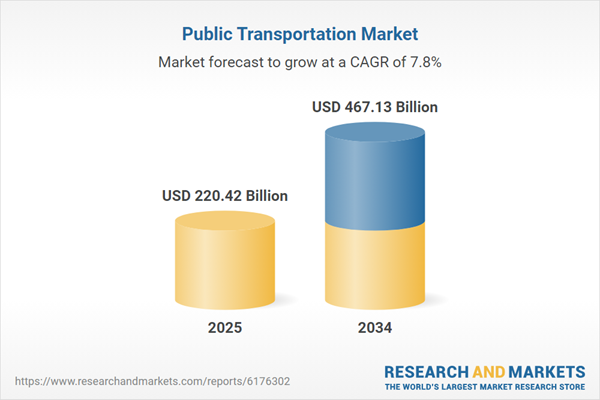Report on Sustainable Construction for Future Urban Development
Introduction: Addressing Urbanization through Sustainable Development Goals
Rapid global urbanization presents a significant challenge to sustainable development. The current rate of urban expansion, equivalent to adding a city the size of Madrid each week, necessitates a fundamental shift in construction practices. To align with the United Nations Sustainable Development Goals (SDGs), a collaborative, systems-thinking approach is required.
- This imperative directly addresses SDG 11 (Sustainable Cities and Communities), which aims to make cities inclusive, safe, resilient, and sustainable.
- Achieving this goal relies on fostering multi-stakeholder collaborations across the entire building value chain, from public authorities and urban planners to architects and contractors, in line with SDG 17 (Partnerships for the Goals).
Advancing Low-Carbon and Circular Construction
A transition toward a circular economy in the construction sector is critical for achieving SDG 12 (Responsible Consumption and Production). This involves prioritizing low-carbon materials and designing for disassembly and reuse.
- Low-Carbon Materials: The use of EPD-certified products like ECOPlanet cement and ECOPact concrete is instrumental in reducing the embodied carbon of new buildings. These materials help projects meet green building standards and contribute directly to SDG 13 (Climate Action).
- Circular Technology: Innovations such as ECOCycle® circular technology enable the production of concrete that is 100% recyclable. This process minimizes the need for virgin raw materials and promotes the efficient use of resources.
- Urban Recycling Infrastructure: The strategy of establishing recycling centers in metropolitan areas supports the concept of “building cities from cities,” creating a closed-loop system for construction materials that advances the circularity targets of SDG 11 and SDG 12.
Enhancing Energy Efficiency in the Built Environment
Existing buildings are a major source of carbon emissions, with in-use operations (heating, cooling, and power) accounting for 70% of the construction sector’s CO2 output. As approximately 80% of today’s buildings will still be in use in 2050, energy-efficient repair and refurbishment are essential for meeting the targets of SDG 7 (Affordable and Clean Energy) and SDG 13 (Climate Action).
- Insulation Solutions: Advanced insulation materials like Airium® enhance thermal and acoustic performance, reducing energy demand and improving occupant well-being.
- High-Performance Building Envelopes: Solutions including high-performance roofing systems and External Thermal Insulation Composite Systems (ETICS) prolong the lifespan of buildings while significantly improving their energy efficiency.
Building Climate-Resilient Cities
In the face of climate change, urban infrastructure must be designed for durability and environmental adaptation. This focus on resilience is a core component of SDG 11 and SDG 13.
- Urban Heat Island Mitigation: Green roofing systems help cool urban environments, manage stormwater, and reintroduce nature into cities.
- Sustainable Water Management: Water-permeable concrete, such as Hydromedia, mitigates flood risks by allowing rainwater to infiltrate the ground, supporting groundwater recharge and contributing to the objectives of SDG 6 (Clean Water and Sanitation).
- Coastal Protection: Engineered solutions like Basalton concrete blocks provide long-lasting protection for coastal communities against extreme weather events.
Fostering Innovation through Digitalization and Modern Methods
The modernization of the construction industry through technological adoption is crucial for building the resilient infrastructure targeted by SDG 9 (Industry, Innovation, and Infrastructure).
- Modern Construction Methods: A rise in prefabrication and modular construction enhances onsite productivity, reduces waste, and improves quality control.
- Digital Transformation:
- Applications of Artificial Intelligence (AI) and Building Information Modelling (BIM) are revolutionizing urban planning and design.
- The Internet of Things (IoT) and digital twins are making building operations safer and more efficient.
- AI-enabled logistics platforms, such as Holcim+, optimize material ordering and delivery, further enhancing efficiency.
Analysis of Sustainable Development Goals in the Article
1. Which SDGs are addressed or connected to the issues highlighted in the article?
- SDG 9: Industry, Innovation, and Infrastructure: The article discusses innovations in construction, such as prefabrication, modular construction, digital automation (AI, BIM, IoT), and the development of resilient infrastructure designed to withstand extreme weather.
- SDG 11: Sustainable Cities and Communities: This is the central theme, focusing on managing rapid urbanization, building sustainable cities, improving energy efficiency in existing buildings, reducing the environmental impact of cities, and creating climate-resilient urban environments.
- SDG 12: Responsible Consumption and Production: The article emphasizes circular construction, the use of recycled materials (ECOCycle®), making concrete 100% recyclable, and reducing the need for primary materials, all of which are core principles of responsible consumption and production.
- SDG 13: Climate Action: The text directly addresses climate change by discussing the reduction of CO2 emissions from buildings, mitigating the urban heat island effect, and developing solutions to adapt to climate impacts like extreme weather and flooding.
2. What specific targets under those SDGs can be identified based on the article’s content?
-
SDG 9: Industry, Innovation, and Infrastructure
- Target 9.4: By 2030, upgrade infrastructure and retrofit industries to make them sustainable, with increased resource-use efficiency and greater adoption of clean and environmentally sound technologies and industrial processes. The article supports this by highlighting “energy-efficient repair and refurbishment,” the use of low-carbon materials like “ECOPlanet cement” and “ECOPact concrete,” and the adoption of “digital automation and smart design” to enhance construction efficiency.
-
SDG 11: Sustainable Cities and Communities
- Target 11.3: By 2030, enhance inclusive and sustainable urbanization and capacity for participatory, integrated and sustainable human settlement planning and management in all countries. The article directly addresses this by discussing the challenge of “rapid urbanization” and the need for a “collaborative, systems-thinking approach to construction” to create the “cities of tomorrow.”
- Target 11.6: By 2030, reduce the adverse per capita environmental impact of cities, including by paying special attention to air quality and municipal and other waste management. This is reflected in the focus on reducing “CO2 emissions” from buildings, promoting circularity by “building cities from cities” through recycling centers, and using materials that enable green building standards.
- Target 11.b: By 2020, substantially increase the number of cities and human settlements adopting and implementing integrated policies and plans towards inclusion, resource efficiency, mitigation and adaptation to climate change, resilience to disasters. The article describes solutions for resource efficiency (“ECOCycle® circular technology”), climate change mitigation (“energy-efficient insulation”), and adaptation (“green roofing systems,” “water-permeable concrete,” “coastal protection”).
-
SDG 12: Responsible Consumption and Production
- Target 12.2: By 2030, achieve the sustainable management and efficient use of natural resources. This is demonstrated by the development of technology that “reduces the need for primary materials” and promotes the “efficient and circular use of resources.”
- Target 12.5: By 2030, substantially reduce waste generation through prevention, reduction, recycling and reuse. The article highlights this target with its mention of making “concrete that is 100% recyclable” and Holcim’s goal of “building cities from cities” by opening recycling centers.
-
SDG 13: Climate Action
- Target 13.1: Strengthen resilience and adaptive capacity to climate-related hazards and natural disasters in all countries. The article details solutions “designed to withstand extreme weather,” such as “Basalton concrete blocks, engineered for long-lasting coastal protection” and “Hydromedia, a water-permeable concrete that lowers flooding risks.”
3. Are there any indicators mentioned or implied in the article that can be used to measure progress towards the identified targets?
-
SDG 9: Industry, Innovation, and Infrastructure
- CO2 emissions per unit of value added (Indicator 9.4.1): The article implies this indicator by stating that “Buildings in use account for 70% of the construction sector’s CO2 emissions,” suggesting that reducing this figure through energy-efficient retrofitting is a key measure of progress.
-
SDG 11: Sustainable Cities and Communities
- Proportion of solid waste regularly collected and with adequate final discharge out of total solid waste generated by cities (related to Indicator 11.6.1): Progress can be measured by the amount of construction material recycled. The article implies this by mentioning the opening of “recycling centers in the metropolitan areas” and the goal of “building cities from cities.”
-
SDG 12: Responsible Consumption and Production
- National recycling rate, tons of material recycled (Indicator 12.5.1): The article provides a direct, albeit product-specific, indicator with the claim that Holcim can make “concrete that is 100% recyclable.” The volume of material processed through their new recycling centers would be a direct measure of progress.
-
SDG 13: Climate Action
- Adoption and implementation of national disaster risk reduction strategies (related to Indicator 13.1.2): The article implies progress can be measured by the deployment of specific adaptive solutions. Examples include the installation of “green roofing systems” to reduce the urban heat island effect and the use of “water-permeable concrete” to mitigate flood risks in urban areas.
4. Table of SDGs, Targets, and Indicators
| SDGs | Targets | Indicators (Mentioned or Implied in the Article) |
|---|---|---|
| SDG 9: Industry, Innovation, and Infrastructure | 9.4: Upgrade infrastructure and retrofit industries for sustainability. | Reduction in the 70% of CO2 emissions attributed to buildings in use; Adoption rate of digital tools like BIM and AI in construction. |
| SDG 11: Sustainable Cities and Communities | 11.3: Enhance sustainable urbanization. 11.6: Reduce the environmental impact of cities. 11.b: Implement policies for resource efficiency and climate change adaptation. |
Number of recycling centers opened in metropolitan areas; Percentage of existing buildings retrofitted for energy efficiency; Area of green roofing and permeable concrete installed. |
| SDG 12: Responsible Consumption and Production | 12.2: Achieve sustainable management and efficient use of natural resources. 12.5: Substantially reduce waste generation. |
Percentage of recycled material used in new construction (e.g., 100% recyclable concrete); Volume of construction waste recycled. |
| SDG 13: Climate Action | 13.1: Strengthen resilience and adaptive capacity to climate-related hazards. | Deployment of solutions to withstand extreme weather (e.g., coastal protection blocks); Implementation of measures to lower flooding risks and reduce the urban heat island effect. |
Source: archdaily.com





